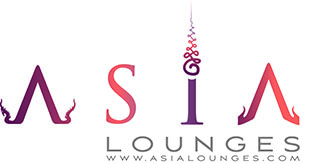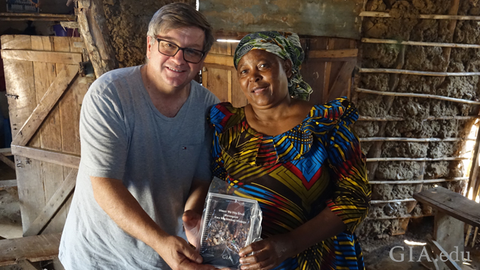Hey Loungers,
Some of you may know today’s guest as GIA’s Richard T. Liddicoat Gemological Library & Information Center’s director. Others know him for his career as a world famous photographer and one of the first modern journalists of the gem trade.
We had the pleasure to meet with him moments after he was awarded with the coveted 2020 Antonio C. Bonanno Award in Tucson, in recognition of his contributions to the gem trade’s development in his decades-long career.
Today, we welcome the man that made Bartholomew the Rat an instant celebrity in 2018 on Facebook: Mr Robert Weldon!
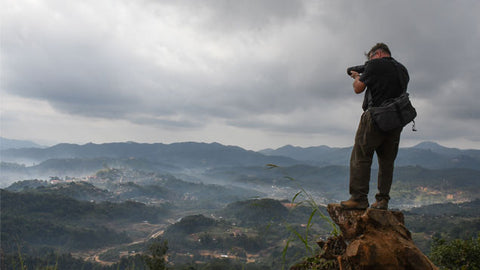
AsiaLounges: First of all I would like to thank you Robert for being with us today. It’s a pleasure to finally have you in these columns! Can you tell us more about yourself? Who are you Robert Weldon?
Robert Weldon:
Thank you! Good to be here as well, and thank you for the mention of Bartholomew the Rat in the introduction. I have an affinity for all animals and I humanely captured him a couple of years ago, residing in my barbecue pit. He is now living the life of a celebrity country rat, following his grand debut on Facebook.
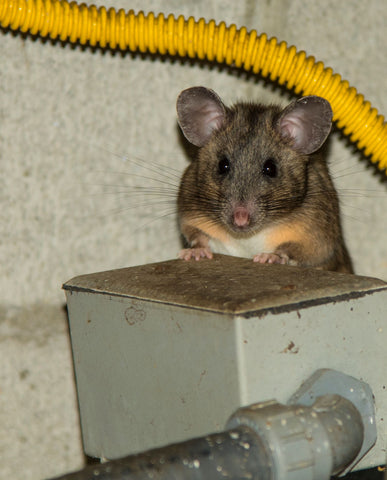
Here is Bartholomew the Rat in 2018 saluting you from the deep interior of the Weldon's BBQ pit! - Photo Credits: Robert Weldon
Changing gears a bit…
In a nutshell, my family were refugees fleeing Germany in 1938. They settled in Bolivia, where I was born years later in the mid-50s, but I grew up in that beautiful country, to which my family owes such a debt of gratitude, and to which I attribute a magnificent, joyful youth. I went to a U.S. school in Cochabamba, Bolivia, learning all subjects in English, which remains my primary language. It also prepared me for university in the United States.
AsiaLounges: Can you tell us what brought you to our merry trade? Was it a family trait? A coincidence? And actually, did you enter the trade from the gem and gemmology side or through your photography background?
Robert Weldon:
It is all of those things. My mother loved gems and was an amateur gemmologist, carrying around her well-worn book, Gemstones of the World by Walter Schumann, or her Encyclopedia of Gemstones by Joel Arem. I wasn’t having anything to do with that in my teens… though I had a camera since grade school, and that was my main reason for being. I studied business administration at university and earned my BSBA, but I never really warmed up to it. But I still had my camera. One day, faced with the need for a job, I joined Zales Jewelers. To boil it down a bit, I realized then that I knew nothing about gems, but was suddenly fascinated by them. That’s when I enrolled at GIA in the late 1980s, and my love affair with gems was ignited the second my eyes trained through the oculars of a microscope! Meanwhile, photography of gems was always my dream. Shortly after graduating, Dona Dirlam, then director of the library, hired me. She soon asked me to reserve a day a week for photographing gems for the lab. What a delight that was…. I saw the most unusual pieces, like the Zale Diamond (now the Incomparable Diamond), unusual emeralds and sapphires. My challenge and joy in those days was photographing phenomenal gems.
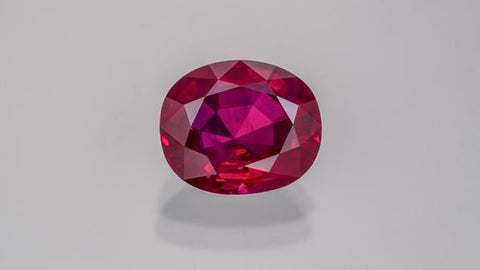
Burmese ruby from Mogok, approximately 4 ct. Courtesy of Amba Gem Corporation. Photo by Robert Weldon/GIA.
AsiaLounges: After some quick research we found out that you started your career as a journalist in the trade and have been one for about 18 years before returning to GIA. Between JCK Magazine and the Professional Jeweler, where you spent most of your time as senior editor, what are the articles you are the most proud of to date? What are the topics you found to have been the most ground breaking or important for the trade that you have covered there?
Robert Weldon:
Leaving GIA gave me different perspective for sure, though I always felt I would eventually come back. At JCK I wrote some pretty ground breaking articles (at the time) on East African gemstones, treatments and disclosures of gemstones, and the gemstone faceting and carving revolution that was gaining steam. There weren’t many journalists who were also gemmologists, which was an advantage. In those days, articles appeared some three months after you wrote them. Now, writing is published via digital devices, thus quite instantly.
But writers in those days also had the luxury of time and reflection; as such the articles were primarily analysis pieces –always presented with a business perspective, to help jewellers. Back then, long articles were appreciated. Today, it is critical to get to the point quickly, and to get out just as rapidly. Jewellers don’t have as much time for a collection of well-turned phrases. Nowadays I write for GIA’s peer-reviewed publication, Gems and Gemology, and our website, GIA.edu. In both cases, I try not to be too long-winded.
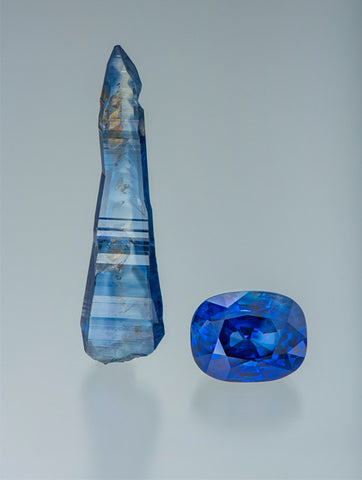
Sapphire crystal from Rakwana, Sri Lanka 5.94 cm in length and weighs approximately 49.99 ct. Facteted gem is 33.16 ct and came from the same pocket as the crystal. The faceted gem was cut from a 207 ct crystal. Courtesy of Dudley Blauwet Gems. Photo by Robert Weldon/GIA.
AsiaLounges: You have been very active around the “Miner’s project” for GIA. Could you tell us more about it? What is it exactly, what does it stand for and how is it meant to help the mining populations?
Robert Weldon:
It has been a homecoming for me here as well. Years ago when I first visited East Africa, I was stunned that artisanal miners enjoyed only a miniscule part of the wealth of a given gem material. It never seemed fair to me, seeing them do such incredibly arduous work. So when I had the chance to develop the guide with Dr. Jim Shigley and with Dona Dirlam at GIA, I jumped at the chance.
The objective is to leave miners with a better understanding of value factors in gem rough, using some very basic visual techniques grounded in gemmology. Together with our partner, Pact, we have learned that the project has indeed provided a better standard of living for miners. What gives me great satisfaction is that it aligns so beautifully with GIA’s mission, which is grounded in education. Miners have learned quickly and want even more opportunities. It has opened doors for many of them and provided a healthy perspective of the gemstone supply chain. The guides have changed lives. Education is the most worthwhile and effective support you can give. It can never be taken away.
AsiaLounges: I understand that you have been involved in highlighting the issue relative to the sourcing of gemstones for decades, would it be possible to hear more about your opinion on the topic and how, in your opinion could the trade improve the situation at the mining point while raising awareness in a positive manner for the industry at retail level?
Robert Weldon:
Retailers have a vested interest in the artisanal miner’s project because the vast majority of colored gems mined today come from artisanal mining sources –at least 80% of them do. Understanding what sources, whose hands and what it took to mine a gem… provides jewellers with real stories they can share with their customers. And like everything else, customers know more now, and are keenly interested in source information and tracking. I believe more jewellers should travel to the source when they can, and with permissions. I believe the experience would increase their gem sales dramatically. They will be intellectually and emotionally vested in the product they sell. Why not? Our business is all about emotions!
AsiaLounges: You have been working for GIA, possibly the most famous gem lab world wide given its influence on the diamond market, for 14 years or so now. How, in your opinion, has the lab evolved, changed since your entry? And how do you expect it to continue to change and adapt to needs of our industry?
Robert Weldon:
Though I do not work in the lab and cannot speak on their behalf, treatments of gem materials and the production of very sophisticated laboratory-grown material raise the possibility of fraud in the marketplace. People need to know what they are buying. It is important to avoid instances where the price is not commensurate, and/or when disclosures of such practices are not shared with dealers and consumers. Labs must adapt to changing gemmological scenarios, but always aim to provide clarity and understanding in the public’s mind. GIA is also becoming a very powerful player in the colored gemstone report market. You can expect that trend to continue.

Platinum pin with Ethiopian opal 63.92 ct, conch pearls 23.85 ctw, natural pearls 5.88ctw and diamonds 15.85 ctw. Courtesy of Pioneer Gems New York. Photo by Robert Weldon/GIA.
AsiaLounges: As a trade person and a gem dealer myself, I have been hearing and seeing the old timer of the trade reminisce “fondly” on the days when gemstones were sold without lab report. At AsiaLounges, we have always considered the Labs (and by that I mean the major ones such as GIA, Gubelin, SSEF, Lotus Gemology, GRS and AGL not the 10 usd Bangkok or Bombay back alley ones...) as being a form of much needed independent referees acting between trade players. Now, what interests me is, in your opinion as both a prominent member of the lab gemmology community and an active journalist during these days of change, what forced the emergence of the labs as we know them today? Was it in response to a break of trust between the dealers and their clients? Was it due to the rapid emergence of new treatments (beryllium, glass filling etc), a bit of both or something else entirely?
Robert Weldon:
Independent verification that something is what it is supposed to be what adds confidence in the public’s mind. That is GIA’s mission to ensure trust in gems and jewellery. So in that regard, I believe reports are essential for the trade. I am always sorry when I see a report being used as the only tool when selling a gem. Gems are not repeatable widgets; they are all unique and special. Sales should be tied to the uniqueness and beauty of a gemstone rather than to a piece of paper and a picture that rarely represents it correctly. We’re talking about love here! If you love a gem, you will be able to sell it. The report from an independent lab matters as an assurance.
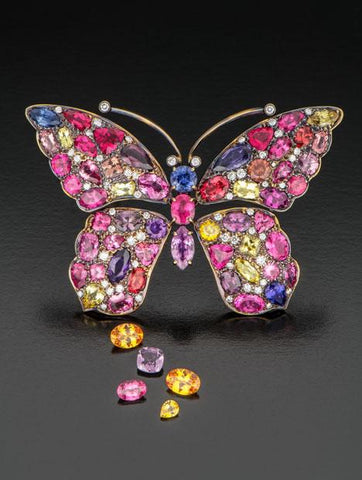
Gold butterfly with Tanzanian sapphires, spinels and garnets, accompanied by loose purple spinel, pink spinel and yellow sapphire. Courtesy of Akiva Gil Co. Photo by Robert Weldon/GIA.
AsiaLounges: Further to the last question, how would you expect the labs to rise to the challenges that we are facing as an industry? By that I mean that the end buyers defiance is clearly increasing (multiple gem report required for a single stone to sell), the emergence of new treatments, while allowing the use of more material than before also puts that much more stress on the lab gemmologists work (such as the P/HT in coloured gems issue in 2019), issues of whether or not some “traditional” treatment should be disclosed or not (for example the issue of oil in ruby, sapphires and spinels), origin determination having as much impact on the sales than it is controversial in its accuracy… Do you think it is something that the labs can and should solve on their own (Ex: LHMC) or is it time for the industry to sit down under one banner and create some industry wide standards instead?
Robert Weldon:
I have been intimate with GIA since I graduated as a student and was asked to join the library as one of its librarians. It was timely, because at the end of my courses I had about $80 left in my bank account.
GIA was relatively small back in 1988. I could be downstairs and in the laboratory to look at a gem in two minutes flat. Everyone was on a first name basis, and even Mr. Liddicoat was legendary because he knew the first names of everyone on campus, including the cleaning crew. Now, I have to walk a quarter of a mile, go through a battery of security checks and man traps, and it takes me 10-15 minutes or so to get to where I need to go in the lab.
GIA grew strongly and in tandem with demands from the industry in the 80s and 90’s, which back then focused mainly on trade in the United States. The U.S. was the global destination and prime market for important gemstones. Especially New York. Bill Boyajian had the foresight to turn GIA into a larger entity, both in the lab and in education, a vision that culminated in the building of a large campus and laboratory in Carlsbad. Virtually everyone in the company moved down to the sleepy seaside village. (Note, I was working for JCK at the time, and had moved to Pennsylvania). GIA has changed a lot since those days.
It is truly global now, with massive labs in various markets around the world. What hasn’t changed is the perennial commitment the company has to ensure the public trust. We do this through continually fine-tuning our education output, through our incredible laboratory, and Gems and Gemology (our peer-reviewed publication, which is available for free online), and of course the very best gemological library in the world. We have a world-class museum, and a program to excite future gemologists around the world –kids!
We are hiring top-level people too: PhD level geologists and scientists who can really leverage their knowledge and the top instruments that are available these days. It is not your father’s gemology any more! And there is much new production of (often very fine) gem materials from Mozambique, Madagascar and other localities. The public is much more interested in understanding source and the supply chain these days; this is why labs are so indispensable today.
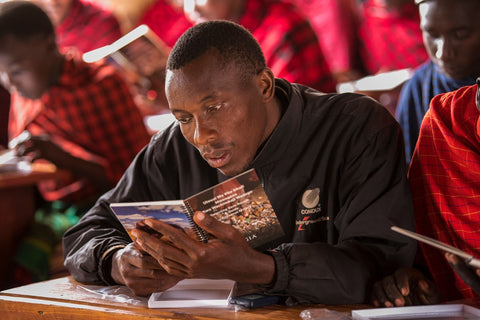
This Masai miner from Longido, Tanzania took part in GIAs educational program for artisanal miners. The program helps miners determine value characteristics for the material they mine, with the aim of helping them secure better margins. The miner works with ruby material found in the region. - Photo Credits: Robert Weldon/GIA
AsiaLounges: About your career as a photographer, what makes, in your opinion the difference between a good and a bad composition? Are there some rules one should follow? Points that can be avoided and others that should absolutely not?
Robert Weldon:
Lighting is critical but composition is, too. Most gem photography is straightforward without too many conflicting backgrounds, so composition is not demanding. Composition does play a much larger role when you’re talking about complex pictures: such as showing many stones in one image, gems placed in an elaborate setting to create a story, etc. The Rule of Thirds and the Golden Ratio both play a role in the way I compose an image, though that is almost automatic for me now. I’m not sure there is a right or wrong, but for a budding photographer, I’d say that looking at a lot of pictures and examining how they were composed is a worthwhile exercise.
I feel that gems look their best on simple backgrounds, especially if they show contrast, i.e: dark gems on light backgrounds, and light gems are darker backgrounds. This tends to be a good rule of thumb because it draws attention the most important thing: the gem.
But not always. Sometimes it is CRITICAL to break the rules to get a successful photograph.
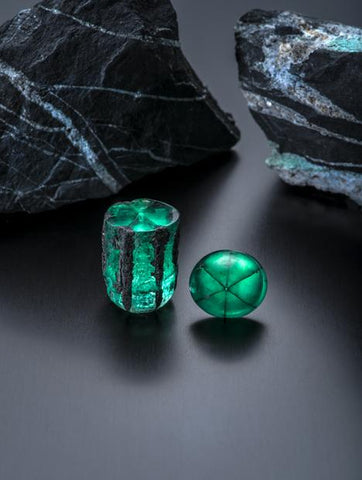
Trapiche emeralds from Penas Blancas mine, Colombia. Rough crystal is 58.83 ct; large cabochon is 22.74 ct. The background consists of two carbonaceous shale rocks with quartz, pyrite and the beginnings of emerald formation. Courtesy of Jose Guillermo Ortiz. Photo by Robert Weldon/GIA.
AsiaLounges: A question that I have been wondering for a while, which is quite industry specific I suppose is, what is in your opinion the biggest difference in terms of requirements between photographing a specimen in matrix, a cut gem and photomicrography of a gem inclusion like the ones from your colleague John Koivula?
Robert Weldon:
These photography roles are all very, very different. I cannot speak to microphotography because that is the realm of giants like Billie Hughes, John Koivula, Nathan Renfro, among others. Long ago, I decided to let that one go. I could not do everything! I focused on gems, jewellery and mineral specimens. In each of those categories what you do also differs; the way you light something can be quite challenging. With coloured gems, representing colour, clarity and cut are of paramount importance. Here, how you diffuse light to bring out colour, or use direct light to excite sparkle, is critical. All of this changes yet again when you are photographing phenomenal gems. With mineral specimens, lighting a crystal face to show texture… but not lighting it too much, to allow color and transparency to show, is important. Orientation of gems and minerals also needs to be understood. Combining all of that with composition is what makes an image successful.
The Art of Photographing Minerals, Gemstones and Jewlry / GIA Knowledge Sessions Webinar Series With Robert Weldon on July 23rd, 2020
AsiaLounges: We are slowly reaching the end of this interview and I’d like to ask you our traditional three advices to your generations willing to follow in your footsteps as a journalist, a photographer and / or a gemmologist and librarian? Second part of this question is, could you also provide three books that you believe any gem and jewellery geek should have in their library?
Robert Weldon:
For all three categories I would offer this advice: lean into your chosen profession. Learn all that you can about it. “Work it” even on the weekends, because you love it. Meet all the people you can in the industry and try to understand them. For journalists, I would say the most important thing is to remain curious. Stories, be they human or gemmological in nature, are always around us waiting to be shared with a larger audience. Writing with a flourish does not matter as much as saying what you need to say directly and clearly. I think it’s also very important to pair your story with the correct image – but of course I would say that!
For photographers, the learning curve of gem photography is quite large. I learn anew with every single gemstone or mineral that I photograph, even after three decades. Finally, don’t be afraid of making mistakes.
In a way, all of the above prepared me to be a librarian. It is an accumulation of all of these things; a successful gemmological librarian needs to be curious, able to speak to gemmologists, geologists, cutters, designers, miners, travellers, students…and journalists. I love them all. And I love books, of course! Richard Hughes’ seminal book, Ruby & Sapphire… is a must. John Sinkankas’ Emerald and Other Beryls… is a must. John Koivula and Eduard Gübelin’s Photoatlas of Inclusions in Gemstones… is a must. Elisabeth Strack’s Pearls…is a must.
AsiaLounges: Thank you very much Robert for being with us today, I am convinced that our readers, the Loungers, have enjoyed this interview as much as we did enjoy writing these lines.
As for us, we will meet you again soon in the Lounges with more exciting content! If you have enjoyed this interview please let us know by liking, commenting and sharing our work with your family and friends on your favourite social media platform. Don't forget that you can also support A Gem Dealer's Journal through our Patreon's Page. It helps us a lot and takes but a second!
Should you have any questions or topic that you’d like us to research for a future interviews and articles, feel free to let us know by contacting us at simon@asialounges.com, it is always a pleasure to dig further into the world of gems and gemmology!
For all the rest, feel free to take a look at our gem and jewellery collection as well as to contact us should you be interested in getting one of our famed bespoke pieces of AsiaLounges Jewellery.
See you again in the Lounges,
